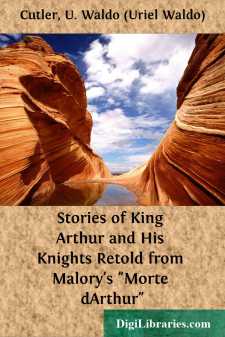Categories
- Antiques & Collectibles 13
- Architecture 36
- Art 48
- Bibles 22
- Biography & Autobiography 813
- Body, Mind & Spirit 142
- Business & Economics 28
- Children's Books 17
- Children's Fiction 14
- Computers 4
- Cooking 94
- Crafts & Hobbies 4
- Drama 346
- Education 46
- Family & Relationships 57
- Fiction 11829
- Games 19
- Gardening 17
- Health & Fitness 34
- History 1377
- House & Home 1
- Humor 147
- Juvenile Fiction 1873
- Juvenile Nonfiction 202
- Language Arts & Disciplines 88
- Law 16
- Literary Collections 686
- Literary Criticism 179
- Mathematics 13
- Medical 41
- Music 40
- Nature 179
- Non-Classifiable 1768
- Performing Arts 7
- Periodicals 1453
- Philosophy 64
- Photography 2
- Poetry 896
- Political Science 203
- Psychology 42
- Reference 154
- Religion 513
- Science 126
- Self-Help 84
- Social Science 81
- Sports & Recreation 34
- Study Aids 3
- Technology & Engineering 59
- Transportation 23
- Travel 463
- True Crime 29
Stories of King Arthur and His Knights Retold from Malory's "Morte dArthur"
Categories:
Description:
Excerpt
Introduction
Among the best liked stories of five or six hundred years ago were those which told of chivalrous deeds—of joust and tourney and knightly adventure. To be sure, these stories were not set forth in printed books, for there were no printed books as early as the times of the first three King Edwards, and few people could have read them if there had been any. But children and grown people alike were eager to hear these old-time tales read or recited by the minstrels, and the interest in them has continued in some measure through all the changing years and tastes. We now, in the times of the seventh King Edward, still find them far more worth our while than many modern stories. For us they have a special interest, because of home setting and Christian basis, and they may well share in our attention with the legends of Greece and Rome.
In these early romances of chivalry, Arthur and his knights of the Round Table are by far the most popular heroes, and the finding of the Holy Grail is the highest achievement of knightly valour. The material for the Arthur stories came from many countries and from many different periods of history. Much of it is wholly fanciful, but the writers connected all the incidents directly or indirectly with the old Briton king of the fifth century, who was the model of knighthood, "without fear and without reproach."
Perhaps there was a real King Arthur, who led the Britons against the Saxon invaders of their land, who was killed by his traitor nephew, and who was buried at Glastonbury,—the valley of Avilion of the legends; perhaps there was a slight historical nucleus around which all the romantic material was crystallising through the centuries, but the Arthur of romance came largely from the imagination of the early writers.
And yet, though our "own ideal knight" may never have trod the soil of Britain or Roman or Saxon England, his chivalrous character and the knightly deeds of his followers are real to us, if we read them rightly, for "the poet's ideal was the truest truth." Though the sacred vessel—the Holy Grail—of the Christ's last supper with His disciples has not been borne about the earth in material form, to be seen only by those of stainless life and character, it is eternally true that the "pure in heart" are "blessed," "for they shall see God." This is what the Quest of the Holy Grail means, and there is still many a true Sir Galahad, who can say, as he did,
"My strength is as the strength of ten,
Because my heart is pure,"
and who attains the highest glory of knighthood, as before his clear vision
"down dark tides the glory glides,
And starlike mingles with the stars."
We call these beautiful stories of long ago Stories of Chivalry, for, in the Middle Ages, chivalry influenced all that people did and said and thought. It began in the times of Charlemagne, a hundred years before our own King Alfred, and only very gradually it made its way through all the social order. Charlemagne was really a very great man, and because he was so, he left Western Europe a far better place to live in than he found it....


